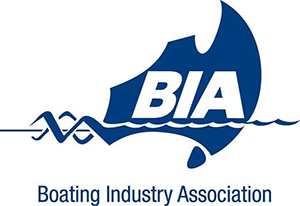EFFECT OF ELECTRICAL CURRENT ON ANCHOR CHAIN
It is far easier to claim poor anchor chain when corroding over a brief period of time than understand why this occurs.
The majority of new anchor chain has a solid coating of zinc through the HDG or hot dipped galvanising process.
The HDG coating is a barrier to both corrosion due to seawater and stray currents found in mooring areas from other boats.
Normal corrosion will occur over a period of years and can be delayed by periodically washing the anchor well, chain and anchor in freshwater.
Electrolysis is a different story. Electrolysis or stray current corrosion is caused by a damaged or corroded earth strap, incorrectly affixed earth bar or even reverse polarity on your anchor capstan.
Stray current corrosion is the action of leaking electrical current as the result of a fault in the boat's DC electrical system or a poorly designed system. Shore power AC supply is often blamed for corrosion on a vessel. This in fact is highly unlikely as the shore power supply is AC. In most cases any corrosion related to a shore power connection will be caused by a common connection between the vessel, shore and other vessels, provided by the shore power earth wire.
Sacrificial anodes attached to propellers, shafts, rudders, hull and keels are “sacrificed” rather than electrolytic action on the item themselves.
Stray current action can erode propeller tips and shafts in a matter of weeks.
When mooring with anchor and chain, an earth is created by the chain resting on the seabed. The anchor is not the first point of contact with the earth unless the chain is horizontal and not resting on the bottom.
If there is stray current emanating from the boat when anchored, the zinc or galvanising coating on the chain becomes the sacrificial anode. The newer the chain the faster the electrolytic action on the chain.
The below image illustrates the effect of stray current action on new chain after 3 weeks intermittent anchoring. If the chain had not been deployed, both the propellers and shafts would have been vigorously attacked.

The easiest way to detect a current passing through the chain is using a DC clamp meter. If there is any current showing on the meter, then you have a stray current in your boat.
The solution is simple, employ the services of a qualified and experienced marine electrician to check the earth strap and its connection and major consumers or producers of DC power such as Gensets, anchor capstans, alternators, bilge pumps, battery connections etc. Allow at least 3 hours for the electrician to carefully check each connection, when both inactive and active.
Earth connections may have dissimilar metals that form the final connection and must be checked and coated with a suitable protective coating on a regular basis. Checking to ensure that the connection is continuous and has low resistance across the connection point will reduce the occurrence of stray electrical currents damaging valuable assets.

